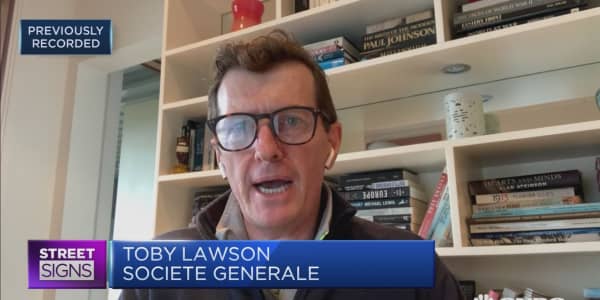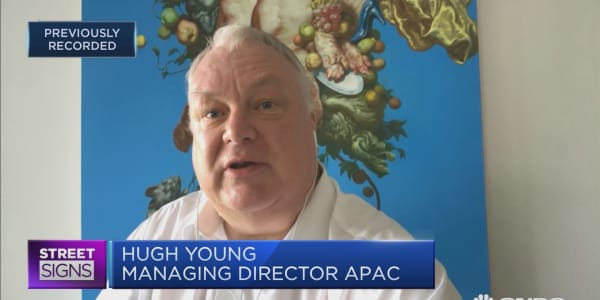On a spring morning in 1918 Private Albert Gitchell, a cook in the U.S. Army, woke up feeling unwell. His throat was sore, his bones ached and he had a fever.
By midday, over one hundred other soldiers reported symptoms matching Gitchell's. These were, it is claimed, the first recorded cases of the 1918 flu pandemic, or "Spanish Flu". When it was over, up to 50 million people around the world had died from the disease.
Human history is littered with pandemics that have killed millions. On top of the devastating effects such diseases have on families and communities, these high death tolls also damage an economy in lost production and demand, with countries taking years to recover from a deadly disease. Should we, in that case, be doing more to prepare for another?
(Read more: Bird Flu: New Headwind for China Stocks?)
"We can be pretty sure there will be another flu pandemic at some point," John Edmunds, Professor of Infectious Disease Modelling at the London School of Hygiene and Tropical Medicine, told CNBC.com. "But as to when it might occur? That's a very different matter – it could be tomorrow, it could be in decades," he added.
The 2002 outbreak of severe acute respiratory syndrome (SARS) spread from Guangdong, in south China, to other Asian countries including Singapore and Vietnam. By the summer of 2003, when SARS was contained, more than 8,000 people had been infected, and over 900 people had died, according to figures from the World Health Organization.
Authorities in countries affected by SARS were eventually able to contain its spread. It was a lucky escape. "If SARS had got out from where it was, if it had got much further, it could have been a real problem," Edmunds explained. "I'm serious. We could still be dealing with it now, it could have been a global pandemic and we'd be trying to develop a vaccine," he added.
(Read more: Could China's Bird Flu Be the Next SARS?)
The cost to the global economy of SARS is estimated to have been $54 billion, according to the World Bank, while the organization estimates that a 'severe flu pandemic' could cost over $3 trillion, nearly five percent of global GDP.
In 2009, another pandemic, swine flu, struck. A 2012 study led by the United States' Centers for Disease Control and Prevention and published in the journal Lancet Infectious Diseases put the estimated number of global deaths at 284,500, far higher than the WHO's initial figure of 18,500 deaths.
Just preparing for the pandemic can be expensive. The U.K government has spent £424 million ($708 million) on flu drug Tamiflu to tackle a flu pandemic, with £74 million having to be written off due to poor record keeping. Global sales of Tamiflu almost reached $3 billion in 2009 according to Reuters, at the height of the swine flu pandemic.
Keeping calm when there is an outbreak – of flu, or a virus like SARS – is crucial. "You do want to try and get the public to react appropriately, but that also means not overreacting," Edmunds said.
"There was quite a lot of overreaction certainly for swine flu, and probably for SARS, to some extent. You would see all those pictures of airports that were empty, people not going to work and wearing masks. The evidence of whether that actually had any effect is very limited, but the impact on the economy was enormous," he added.
(Read more: Hidden Market Risk: Bird Flu)
The best defense for a pandemic is planning. In a 2009 report, former Secretary of the U.S. Department of Health and Human Services Michael O. Leavitt wrote, "Ultimately, the key to preparing for a pandemic is to develop, stockpile, and prepare to distribute vaccines and antivirals – vaccines to prevent people from becoming infected by a virus, and antivirals to treat them if they are infected."
Swiftness of action is also essential. When SARS struck, there was criticism of China's delayed response and allegations of a cover up. But the country's reaction in 2013 to H7N9, a new form of avian flu, has been praised: bird markets were shut, and poultry was culled. Just last month authorities in Hong Kong destroyed 20,000 chickens after H7N9 was found in poultry from mainland China.
When a previously unknown virus appears, things can, however, get tricky. "Those are the ones which are much more difficult to plan for because you don't really have any idea how they might spread," Edmunds said.
"Without any kind of notion of how they might spread it's incredibly difficult to do anything… those are the ones where you just have to take general precautionary measures, but you can't really do anything specific," he added.




